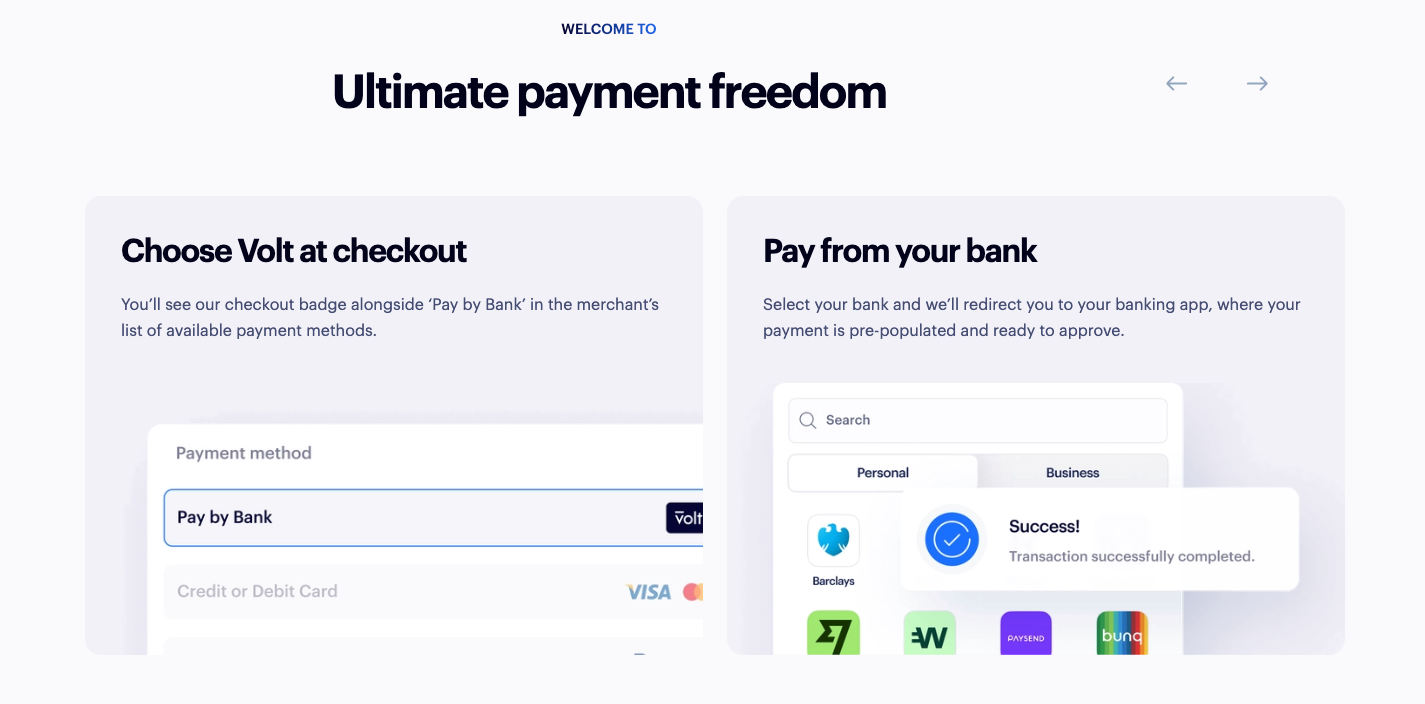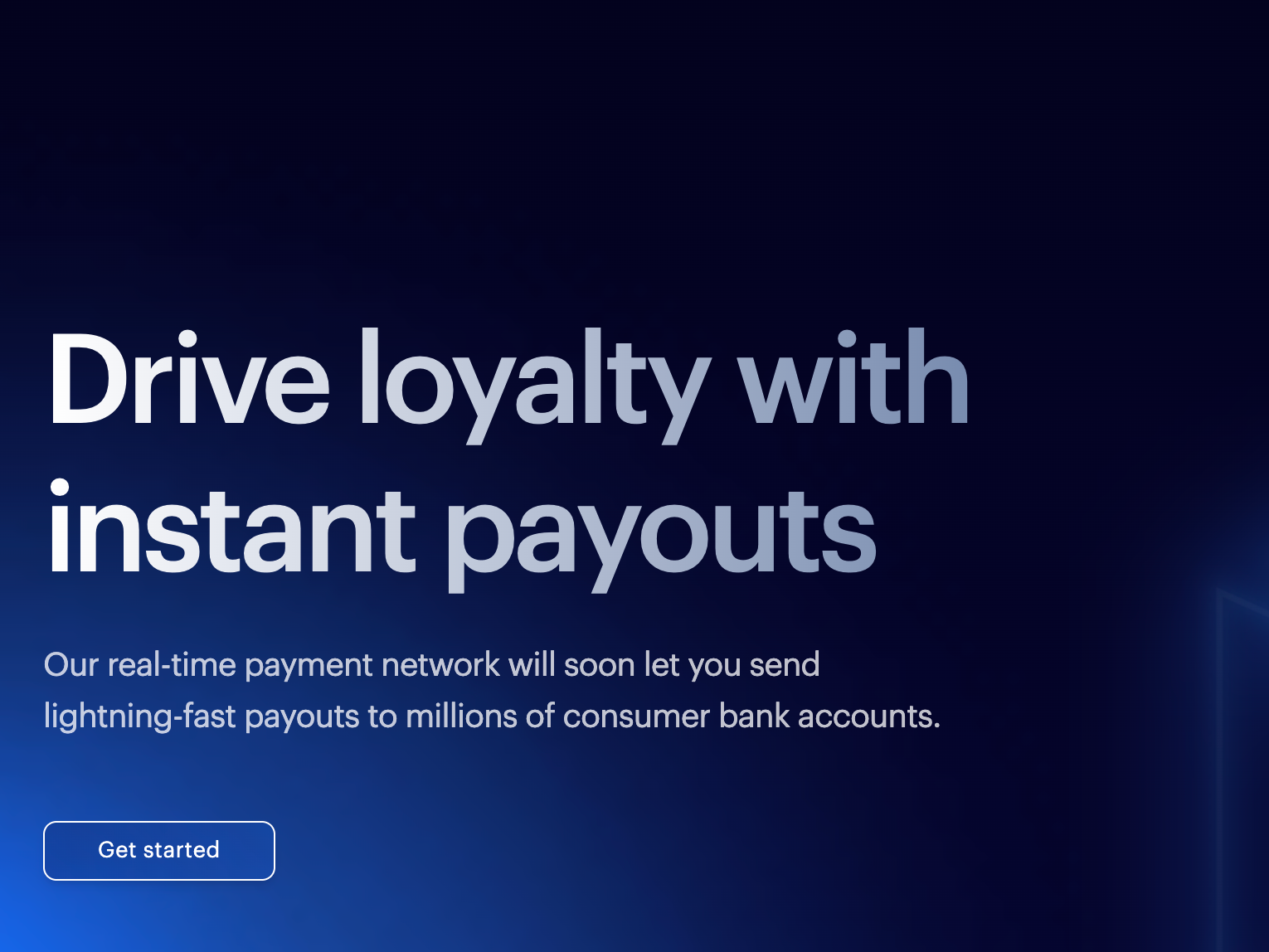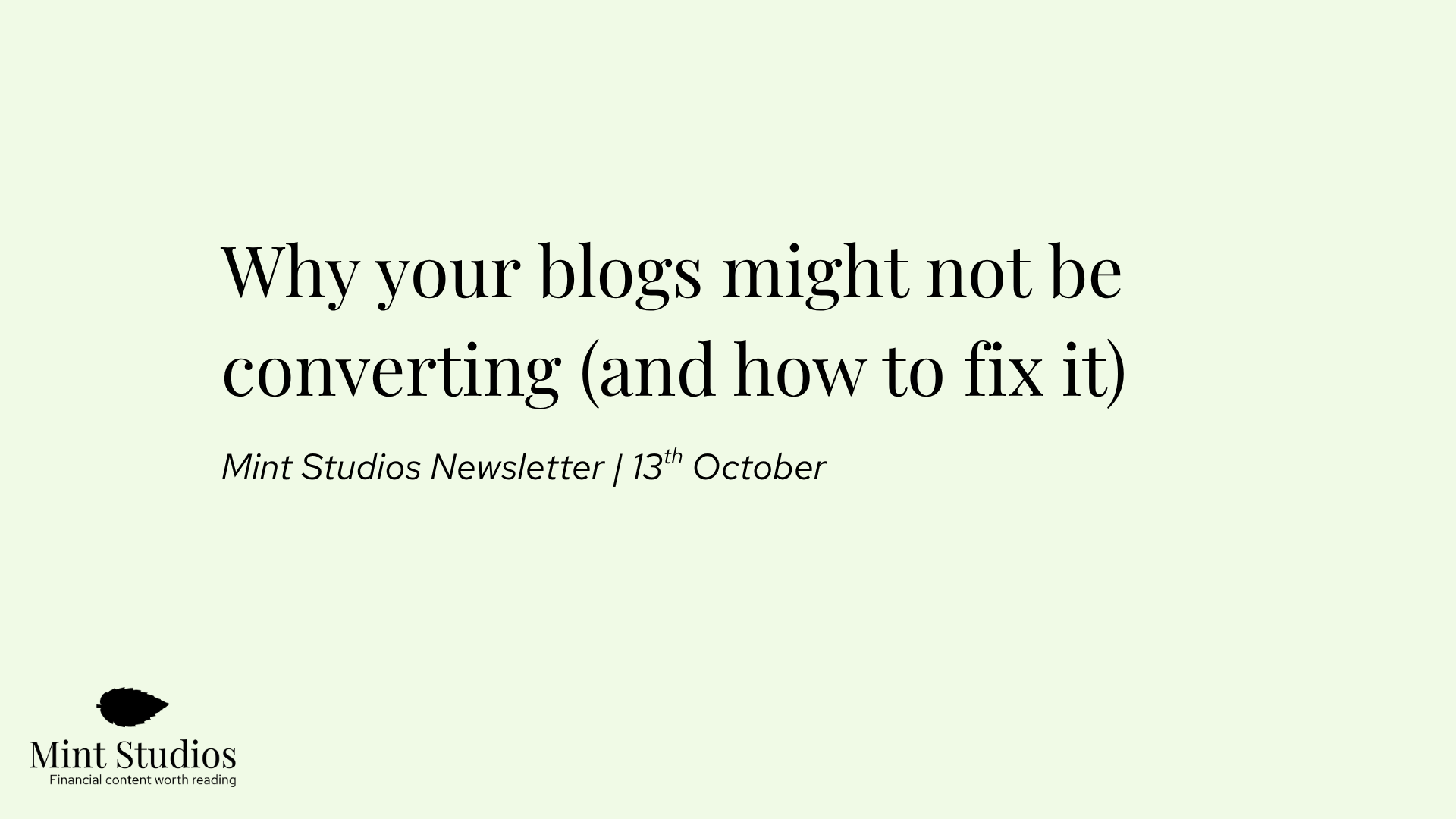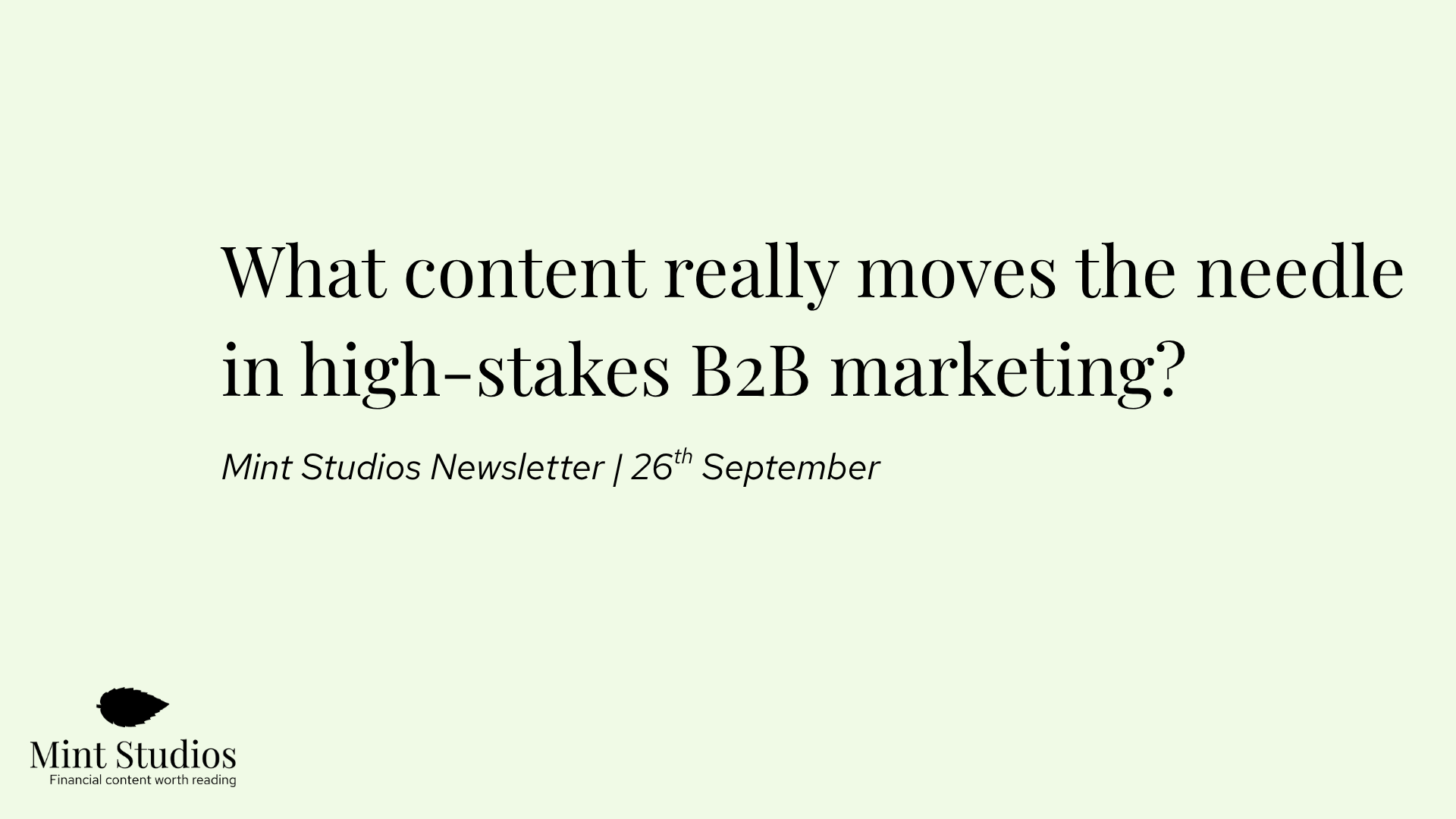At first glance, journalism and conventional forms of marketing don’t have a lot in common. One is intended to tell the truth about the world as it is. The other’s goal is ultimately to sell.
But in its focus on selling, marketing can often oversell. It often exaggerates, it claims too much—it’s hyperbolic and unconvincing. And when so many companies promise the world, the effect on customers can be deadening.
In this context, what often cuts through the noise are those brands who tell it like it is, and speak plainly and truthfully, in a way we’d normally associate with journalists.
Usually, prospects don’t need to hear that a product does everything, or even that it’s the best product available. Instead, they need to understand what a product does, how it can be used to solve their specific problem, and how it will concretely benefit them.
This is precisely how Charlie Gilbert, Head of Brand & Communications at Volt, thinks about marketing. A trained journalist himself, he’s brought the truth-telling elements of that profession to fintech marketing.
So, rather than resorting to cliches or grand promises, Volt’s content keeps things simple and down to earth. The brand focuses on quality content that explains open banking, and how merchants and consumers can benefit from it, in plain English. And this approach seems to be paying off.
In the content case study, we talk about the importance of truthtelling and storytelling, the benefits of producing “selfless” content, and how Volt has adjusted to a world where prospects find brands through LLMs.
Volt’s backstory
Volt is an open banking infrastructure platform that unites domestic schemes to a single harmonised standard. It’s seeking to be the first global real-time payment network, with the aim of enabling consumers from across the world to benefit from instant payments straight from their bank.
Volt was founded in 2019, shortly after the open banking directive from the UK’s Competition and Markets Authority (CMA) came into force. The founder spotted the opportunity of open banking early.
Since onboarding its first merchants in 2020, Volt has been expanding across the world. It added Brazil to its geographies in 2021, for instance, and Australia in 2023, when it also secured series B funding.
Now, as of February 2025, Volt is operating in 33 countries. Considering how new open banking is, this is a huge success. But this also comes with challenges.
For one thing, precisely because open banking is still a novel financial approach, it tends to have different meanings in different geographies. And as a self-described “network of networks”, Volt has to understand, harmonize, and optimize these different networks itself—not just for its own purposes, but for its users too.
What’s more, as open banking is used both by merchants and consumers, these meanings need to be understood, and the technology trusted, by many different audiences.
Of course, it goes without saying that content plays a major role in everything Volt does—from speaking to investors to assuaging the concerns of consumers. In fact, as Charlie makes clear, “content is fundamental to everything that Volt does; it ‘would essentially cease to exist’ as a brand without it.”
How Volt has made “truthtelling” the essential quality of its content
Across the fintech industry, too much marketing is held back by what Charlie calls “dense descriptions and hyperbolic taglines”. When fintech content teams need to describe highly technical products with often innovative features, it’s not surprising that things can often get jargon-y. Yet this can be alienating for readers.
Volt has had real success in breaking out of this mold. As Charlie explains, the content marketing team’s ability to articulate what the company does in plain and clear English is what has set it apart in the market.
This straightforwardness might not find such success in other industries. But in open banking, it’s crucial to enable adoption.
When the CMA required banks to start enabling open banking in 2017, the fintech industry was galvanized by hype about what it could enable, transform, and disrupt. And while that hype helped gain the technology attention, it often didn’t translate into everyday customers understanding the technology. For a technology that requires people’s trust and comprehension, though, this in turn negatively affected adoption.
Charlie and Volt wanted to strip back this hype and instead articulate with “granularity” what a fintech could actually do in this new ecosystem.

It’s this that Charlie refers to as a kind of “truthtelling”. And it means that, while Volt is a growing company with global ambitions, there’s a down-to-earth quality to their content.
But what does this actually look like? In their long-form blog content and videos—Volt’s two favorite formats—there are two main focuses:
- Have a story for every product
- Create content “altruistically”—not just for lead gen
1. By telling stories that are relevant to Volt’s diverse audiences
It may sound like a marketing cliche—and Charlie is very well aware of this—but a big part of Volt’s approach to content is to think deeply about the stories they want to tell about each product.
One of the key reasons for this is that open banking as a technology is a little abstract. Consumers don’t engage with it themselves and may not even know they’re using it at all.
In fact, according to an article in the Financial Times, over three quarters of UK adults hadn’t even heard of open banking. Charlie rightly insists that this article kind of misses the point: open banking is supposed to operate in the background.
Yet if consumers are going to choose to use Pay by Bank, they need to know what it can do and why it’s trustworthy. And telling real and inspiring stories of products that consumers genuinely love already is one way to do this.
But it’s not only end-consumers that Volt needs to talk to. Instead, due to the B2B2C nature of open banking, the company has many different audiences—including merchants, prospective merchants, and end users, and also investors, journalists, and prospective employees—and Volt’s content needs to speak to them all.
So what does this storytelling mean in practice?
At Volt, every new product or feature is deliberately connected to a story that resonates with a specific audience. Instead of simply presenting a product with its basic technical capabilities, the brand consciously weaves this product into a narrative about a wider use case or benefit.
For instance, for Volt’s payouts product, the story is about loyalty. This is the first message that appears on the payouts product page, and it’s summarized with a simple, concrete promise: “Happier, more loyal customers – across all of your key markets”.

But it’s easiest to see Volt’s commitment to this audience-focused storytelling in their video explainers targeted at different kinds of merchants: i-gaming, online retailers, travel agents, and more. This series, “Deeper Dive”, was planned as a way to market Pay by Bank to all these industries.
This series was crafted deliberately around the pain points of these different audiences. Given that the experiences, struggles, and goals of these industries are very different, they’re likely to engage with different narratives, different focuses, and different features. While it takes more work for Volt, the payoff is clear.
For Charlie, it’s this ability to tell compelling stories about its products, in plain language, that has enabled Volt to become a recognized leader in the space. While other large companies can get lost with their messaging when they have too wide a product offering, Volt has stayed committed to the specificities.
2. By creating “altruistic” content that’s not just focused on generating leads
In marketing, it’s surprising to see content that’s created without being tracked for views, likes, or sign ups. Given the amount of resources that quality content requires, it almost feels like a waste of time for businesses to write or film content without proof that it’s working.
Yet this is exactly something that Volt has been experimenting with. That’s not to say that Volt doesn’t track the success of its marketing assets—of course it does. But at times the marketing team deliberately forgoes a focus on lead generation, to create content instead that, in Charlie’s words, is more “selfless” or “altruistic”.
It’s another aspect of the commitment to truthtelling that Charlie gets from his journalistic background. Rather than tying everything to sales, leads, or traffic numbers, sometimes it’s worth creating something just because it’s useful. And not just useful for Volt, but for the industry at large.
The best example of this that Charlie shares is a long-form blog article he wrote, “A complete guide to open banking around the world”.
In the piece, Charlie brought together the huge variety of different understandings of open banking in different regions across the world. It was a significant work of research, largely because of its scope. But in the end, the piece has become a point of reference for anyone looking to understand the uses, regulations, and nuances related to open banking in different geographies.
Such a piece might be top of the funnel (and so unlikely to bring in many leads), but it has proved useful for the entire industry. Charlie knows this because he’s seen it shared in industry Slack channels, even among competitors.
So, even if it hasn’t had success as a lead-generating piece of content, there’s good evidence that it’s positioned Volt as a leader in the open banking industry nonetheless.
Volt’s main content strategy objective: brand recall
For Charlie, the primary aim of Volt’s marketing efforts is brand recall. In his words, “when someone says ‘open banking’ or ‘pay by bank’, we want Volt to be the brand that pops into their head”. It’s why Volt’s occasionally “selfless” approach to content makes sense. It’s a wager that many readers will remember the brand after reading the guide.
Yet the goal of brand recall is not just to associate Volt with “open banking” as such. Instead, in an ever-changing industry like fintech, Volt is conscious of the need to keep up, evolve its positioning, and engage with new themes that are emerging in what Charlie calls the “zeitgeist”. Namely, if people are asking questions about ideas around open banking, Volt wants to provide the answer.
This means that a key part of Volt’s strategy is to survey the open banking industry at large and engage with the conversions that are being had by potential customers. For instance, people are asking about the safety of Pay by Bank, the viability of commercial VRPs, and the relative benefits of open banking to simple card payments.
In response, Volt creates content that specifically engages with those concerns. Not only does this build them a reputation for attending to real customer pain points, but it helps cultivate brand recall associated with the most relevant themes in the industry.
For instance, you can see how Volt are engaging in conversations about open bank’s safety and protections here: Pay by Bank consumer protection: Where we are and what needs to happen next
Why Volt prioritizes the “integrity” of organic over paid channels
Another element of Volt’s down-to-earth approach to content marketing is their preference for organic over paid channels. For Charlie, this choice has been both a strategic motivation and an ethical one.
Now, Charlie means no offence to businesses that use paid channels, as Volt does use them too. But the company tends to leverage them almost exclusively for ABM campaigns, where, in Charlie’s words, these ads are used in an “incredibly tactical and incredibly topical and incredibly focused” way.
So, why the aversion to paid channels?
For Charlie, paid media risks coming across as “insincere” and can lack the “integrity” that organic content can have. As Charlie puts it, if you know that someone has paid for content to be put in front of you, “why would you be interested in reading it?”.
It’s an interesting point, even if it’s one that may be controversial among marketers. If a company is paying for you to read a piece of content, it may feel to readers like it lacks conviction or truthfulness, or that the company doesn’t trust that it will be widely shared. And in some cases, it looks almost disingenuous.
For instance, Charlie tells a story of how Volt was offered the chance to sponsor a session about open banking at a fintech conference. Normally, Charlie would see this as a good opportunity, but the issue was that one of Volt’s clients was going to be speaking positively about their experience with the product. He therefore felt that sponsoring this session would compromise the company’s “editorial integrity”, since attendees may question whether the client’s review was genuine.
It’s the same idea that motivates Volt to focus primarily on organic distribution—such as organic search and LinkedIn posts—and to rely on the inherent quality and usefulness of its content to reach its audience. And it’s working. The way that Volt’s content has been shared and praised throughout the open banking industry suggests that Charlie might be right in his belief that “if you have the right content, you reach the right audience”.
What’s more, some well-known figures in fintech are playing a big role in picking up and distributing Volt content, even though the Volt marketing team is not targeting influencers deliberately. For instance, a video that Volt published about PayTo—the Australian real-time payments network—was reposted on LinkedIn by fintech influencer Marcel van Oost, with the comment that this was “one of the best explainers of PayTo out there”.
In fact, LinkedIn is proving an extremely lucrative channel for Volt. Not only is it where Volt’s customers and other industry leaders are hanging out. But Charlie has the sense that there’s also still not a lot of great content on the channel. As such, this is a gap that Volt is looking to fill.
How bringing PR in-house increased inbound leads
One channel in particular that helps to keep Volt in the mind of the public is PR. Whenever there’s a new product or feature, Volt shares a press release that disseminates the story attached to it.
However, there’s been a major change in recent years in the way that Volt has managed its PR. Namely, in an unusual move for a fintech brand, the marketing team decided to bring the PR function in-house, and it’s had some intriguing results.
Like most companies, previously Volt worked with an external PR agency whenever they launched new products. The issue was that the agencies usually lacked the understanding of the industry and how to communicate that nuance.
Now, the Volt team writes their own press releases. In some way, this comes back to the question of storytelling. Writing press releases themselves has helped Volt to better control the narrative around each product, rather than having an external agency manage that story for them.
It’s no criticism of outsourced PR professionals to say that Volt’s internal team has a greater grasp of the nuances and benefits of the product. And by writing these press releases themselves, Charlie’s team can go into detail about how the product is used—rather than just announcing its release—and draw upon ideas that an external agency might miss.
But the results have been significant. Now, for each press release they publish on LinkedIn, Volt receives three or four messages in their inbox from companies asking for a demo. And what’s more, the number of leads has remained steady even while they’ve managed to cut their overall marketing budget.
Of course, this means more work for the marketing team. They need to target journalists, build up media lists, write the release, distribute it themselves, and repost it on LinkedIn, but it’s clearly worth it for them.
Brand recall is also important in LLMs: Here’s how Volt is optimizing for this new channel
Another inevitable part of driving brand awareness and recall has been to secure brand mentions to improve visibility in LLMs.
In Charlie’s experience, writing detailed press releases with all the key nuances is helping with LLM visibility, and it’s something they want to focus on more.
But long-form content is helping too, particularly if it’s shared publicly and ranks well.
While Volt has not yet seen any leads come in directly from LLMs, it’s still early days. Their next step is to add a “How did you hear about us?” question on their lead form, to get a better understanding of where leads are now coming from.
This is something we’ve been working a lot on at Mint and we’ve found that digital PR and net new content targeting specific questions is what works best. You can read more about it here: Want LLMs to Recommend Your Brand? Here's What We've Found Works: GPT Articles
What content are they proudest of?
What is open banking, and how is it being rolled out around the world?
When it comes to creating content as a useful resource, there are few better examples than Charlie Gilbert’s own extensive piece on global approaches to open banking. In Charlie’s words, it’s “one of the only pieces of its kind on the internet”.
Stablecoins explained in 35 seconds (in the style of Bob Mortimer)
On Charlie’s own LinkedIn profile, he has the freedom to create content that’s a little more unconventional. One video he recorded was a song about stablecoins, sung to the tune of “Slender People” by Charlie’s “comedy hero” Bob Mortimer.
Volt: Cutting through the noise with down-to-earth content
In a part of the fintech industry that’s suffered from hype, hyperbole, and a general lack of understanding, Volt is taking a different approach. It aims for honest down-to-earth content that explains what the company does with clarity.
In some ways, this is what all content should do—be genuinely useful to all its different audiences. As Charlie has shown, it’s helping Volt win customers, gain respect from the wider industry, and act with integrity too.
Thanks Charlie for speaking with us!










